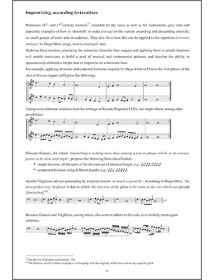50 Renaissance & Baroque Standards (version anglaise)
50 Renaissance & Baroque Standards (version anglaise)
38,90 €
TTC
With Variants, Examples & Advice for Playing & Improvising on any Instrument
Realised by Pascale Boquet and Gérard Rebours
-
 Garanties sécurité (à modifier dans le module "Réassurance")
Garanties sécurité (à modifier dans le module "Réassurance")
-
 Politique de livraison (à modifier dans le module "Réassurance")
Politique de livraison (à modifier dans le module "Réassurance")
-
 Politique retours (à modifier dans le module "Réassurance")
Politique retours (à modifier dans le module "Réassurance")
6396
Fiche technique
- TYPE
- Papier
- AUTEURS
- Rebours Gérard
- PAGES
- 144
- FORMATS
- 21 x 30 cm





